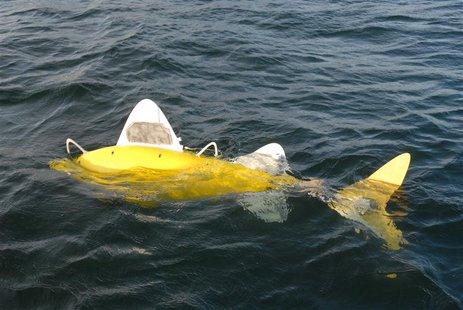 Whenever an oil tanker is torn apart in a storm, the resulting carnage hits the headlines around the world. What we hear little about, however, is low-level pollution, where ships or factories close to the water leak fuel and other substances on a smaller scale. Of course, the cumulative effect of such pollution can also be extremely damaging to the environment.
Whenever an oil tanker is torn apart in a storm, the resulting carnage hits the headlines around the world. What we hear little about, however, is low-level pollution, where ships or factories close to the water leak fuel and other substances on a smaller scale. Of course, the cumulative effect of such pollution can also be extremely damaging to the environment.
This problem prompted Shoal, a European Commission-funded consortium, to begin developing a robotic fish that can search the water in which it swims for contamination. Shoal’s creation has just begun tests in a port in northern Spain in the hope that it will one day provide fast and accurate data about water quality and the location of any hazardous liquids or materials lurking under the waves.
Speaking to the BBC about the $31,000 (£20,000) robofish, Luke Speller, a senior scientist at the research division of BMT Group, a technology consultancy which is part of the consortium, said: “The idea is that we want to have real-time monitoring of pollution, so that if someone is dumping chemicals or something is leaking, we can get to it straight away, find out what is causing the problem and put a stop to it.”
Speller explained that currently, harbor authorities usually take water samples around once a month.
“In that time, a ship could come into the harbour, leak some chemicals somewhere, then it’s gone, all the way up the coastline,” he said. “The idea is that we will use robot fish, which are in the harbour all of the time, and constantly checking for pollution.”
The robofish is 150 cm in length and made from carbon fiber and metal, and, with its fins and streamlined shape, looks and moves through the water like a real fish. While this means it will be able to handle waters strewn with debris better than a device equipped with propellers, hopefully it won’t result in real underwater creatures attacking it.
Fitted with an array of sensors, the robofish detects contaminants such as lead and copper as water passes through its body. It can also provide other data such as the water’s oxygen level. One of the special features of the device is that it can work autonomously, sending information back to on-shore monitoring equipment.
Speller hopes that the robofish will be commercialized in the next few years, helping environmental agencies around the world to better police their waters and cut down on pollution.


